

Play NYC's Only Vintage Pinball 1870s-1970s

A predecessor to the first pinball games! Montague Redgrave patented the spring loaded plunger in 1871 and used that to pave the way for future "pinball" games.
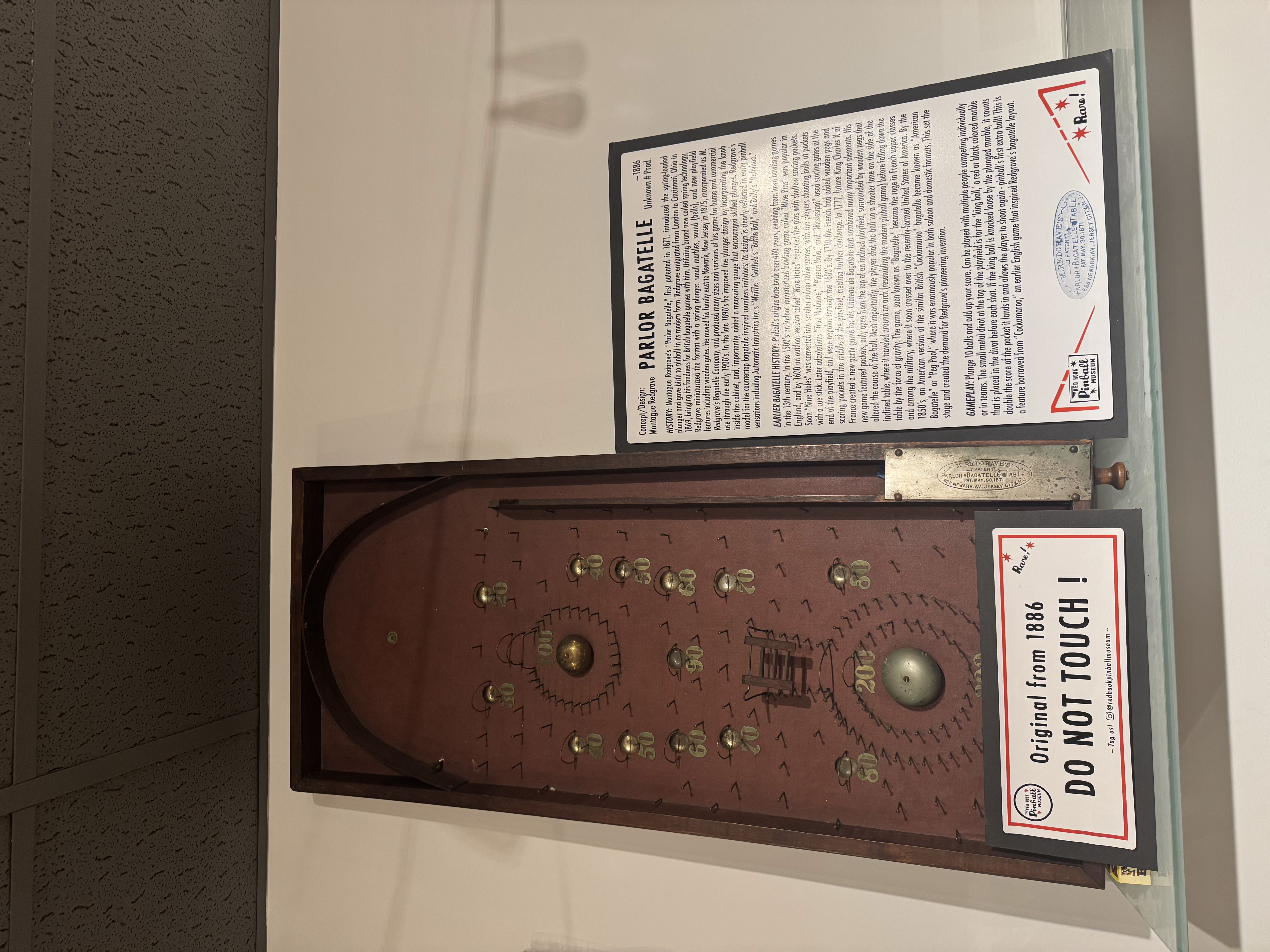
Widely considered the first pinball machine ever made. Whiffle took the bagatelle format and commercialized it by adding a coin slide and glass on top!
27,000+ Produced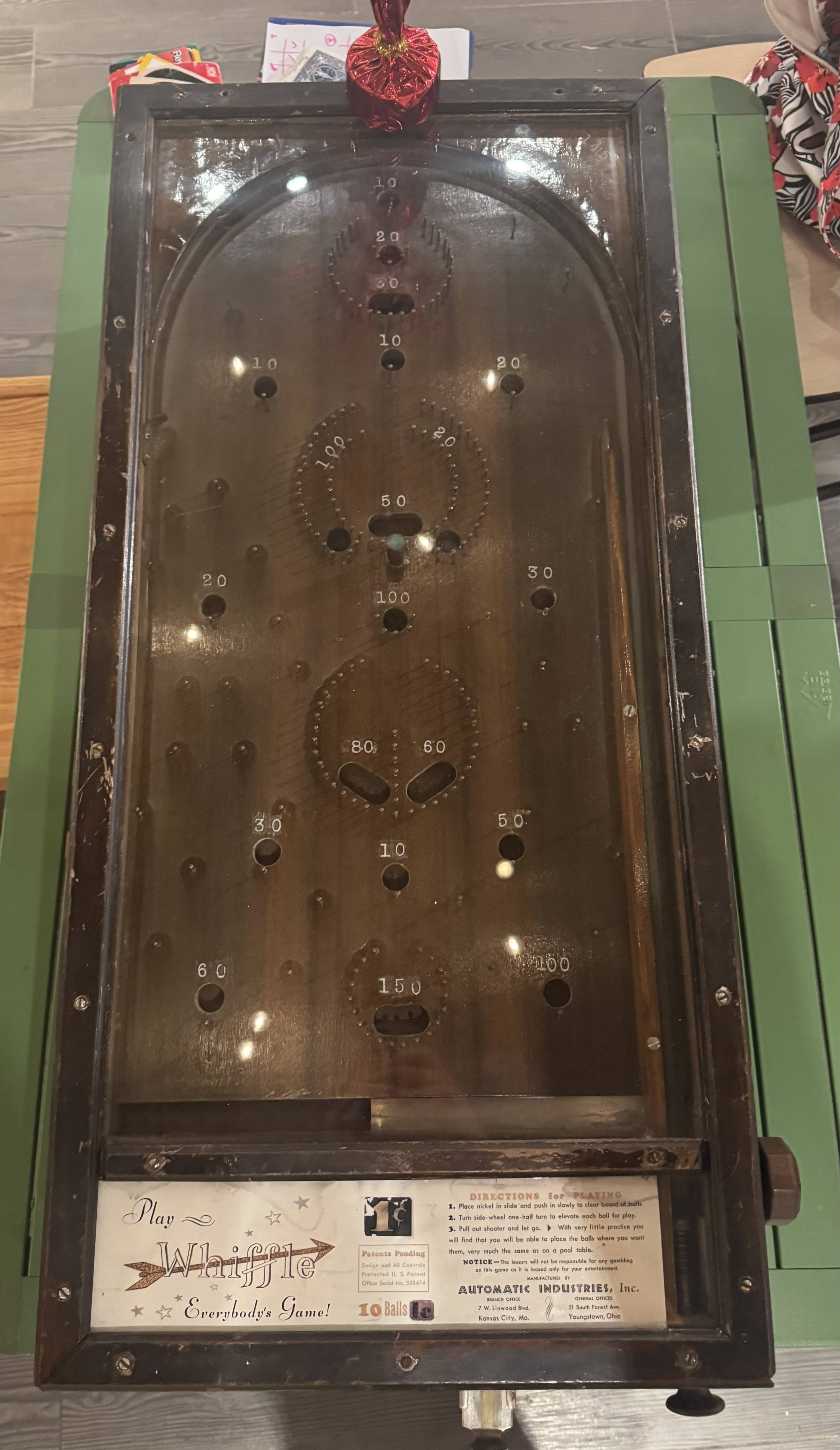
The first game to officially coin the moniker of "Pinball" and use a push button ball lift (used up until the 1960s!), this game was one of many clones of the wildly successful 'Whiffle'.
40,000+ Produced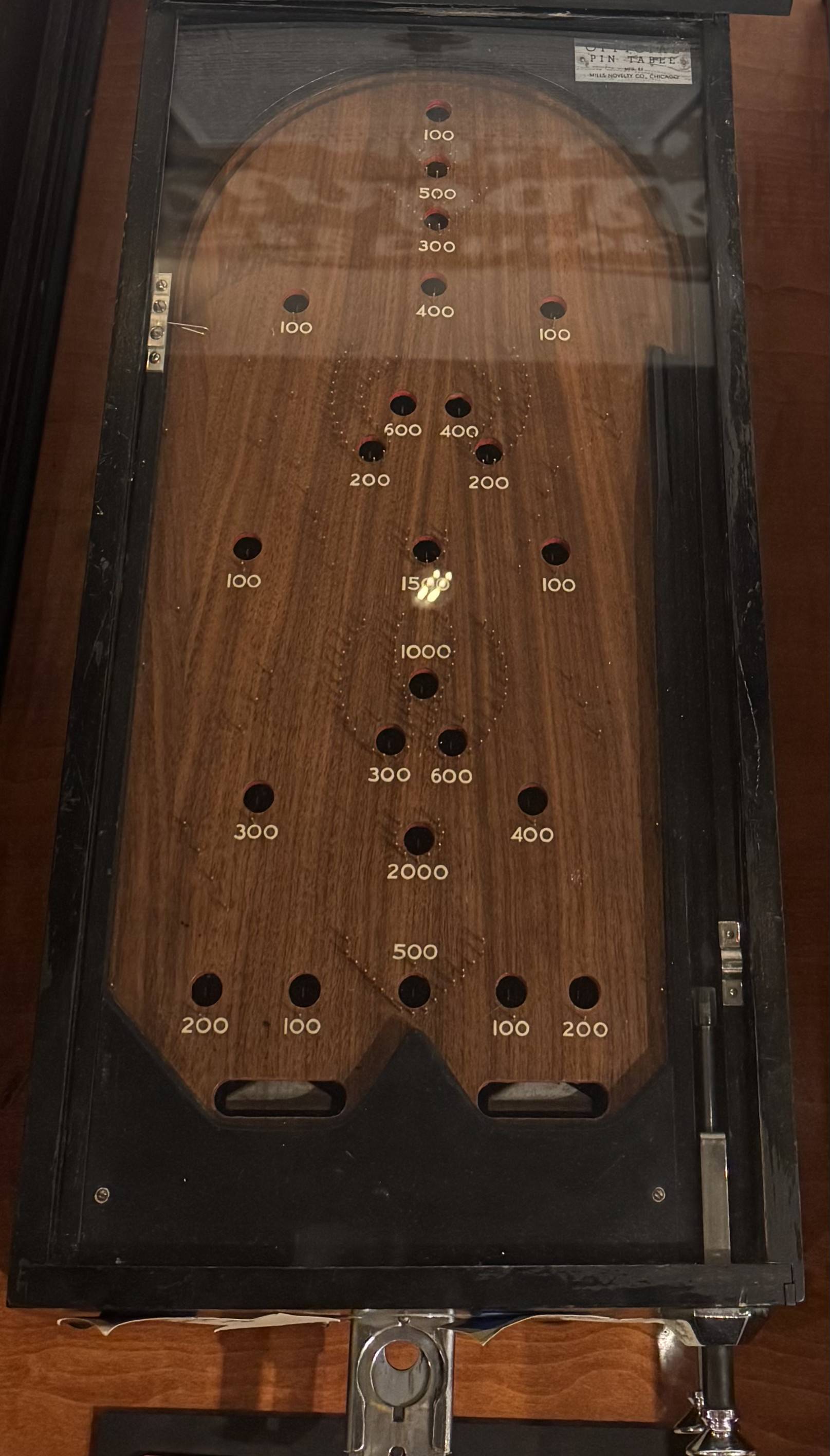
One of the earliest examples of ramps in pinball, this was named after the famous ride 'Sky Ride' at the Chicago World's Fair!
Unknown # Produced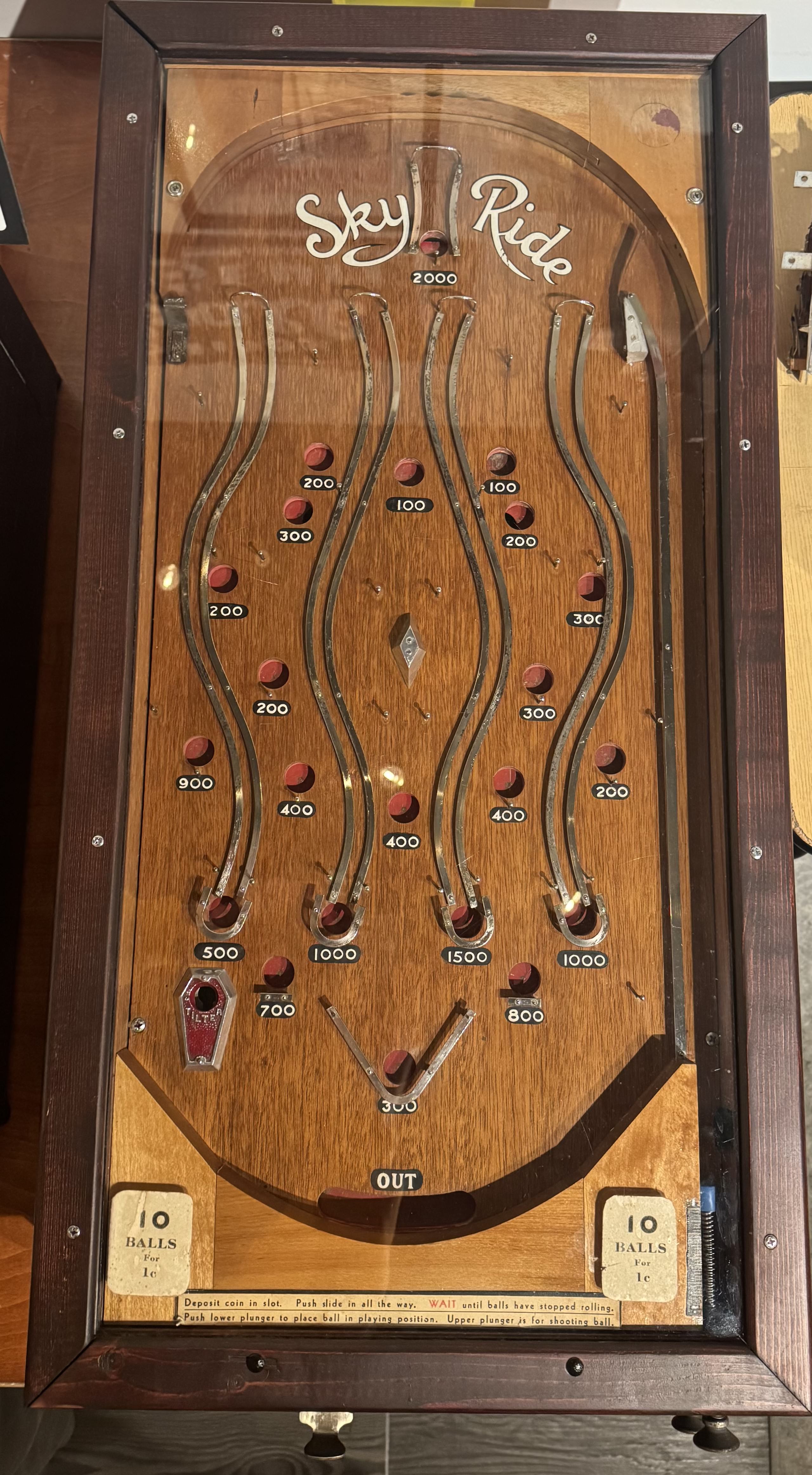
Play a half inning of baseball! One of Rock-Ola's most coveted mechanical masterpieces. Prior to going into the jukebox industry,
Rock-Ola engineered a series of highly complex purely mechanical pinball machines that pushed the limits of pre-electric technologies.
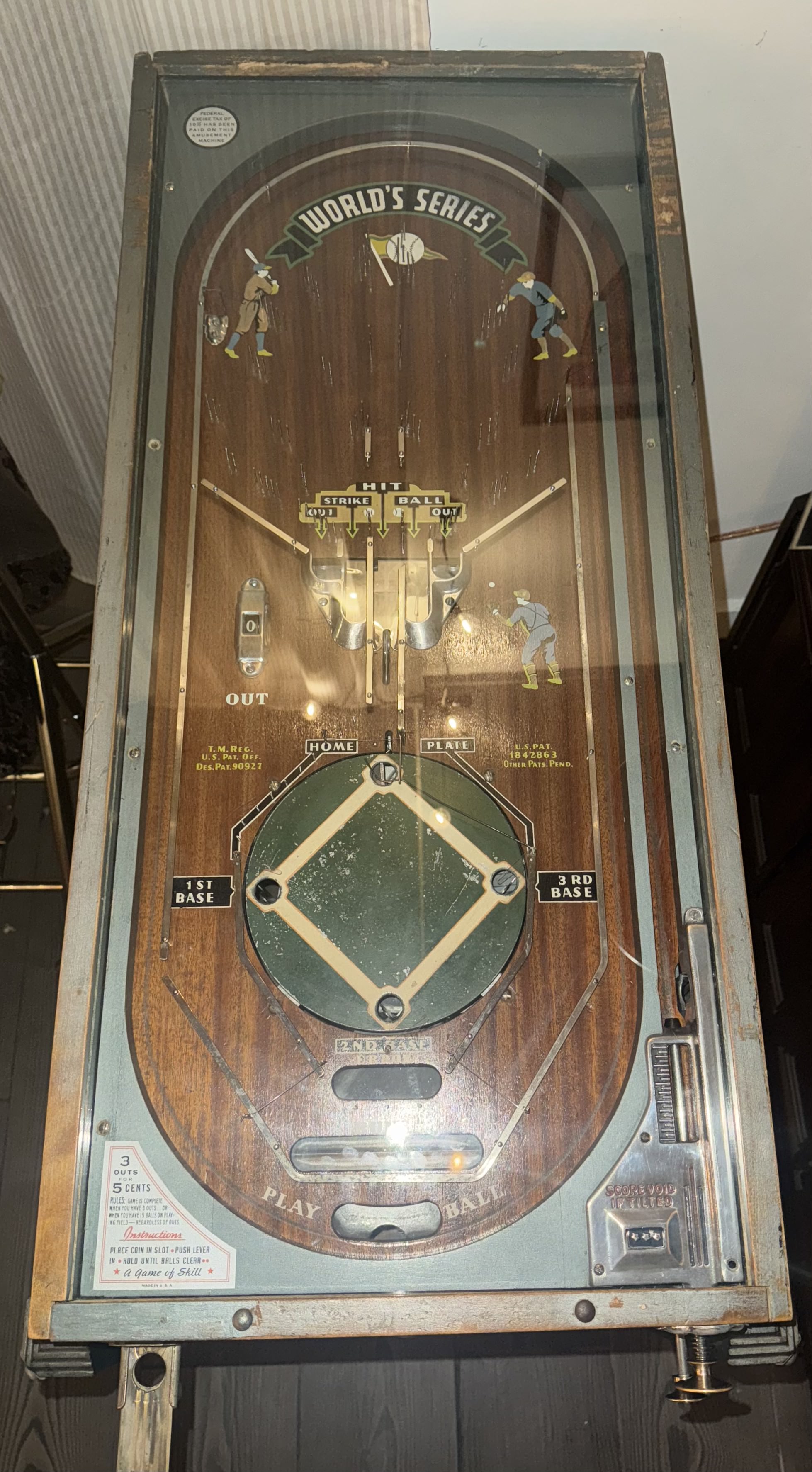
The first game with a horseshoe shot! One of the last games to feature reversed flippers, this game provides the player with a wonderful lights show as you unlight all 10 bumpers!
Also one of a few games to feature the rare Double Award buy-in option!
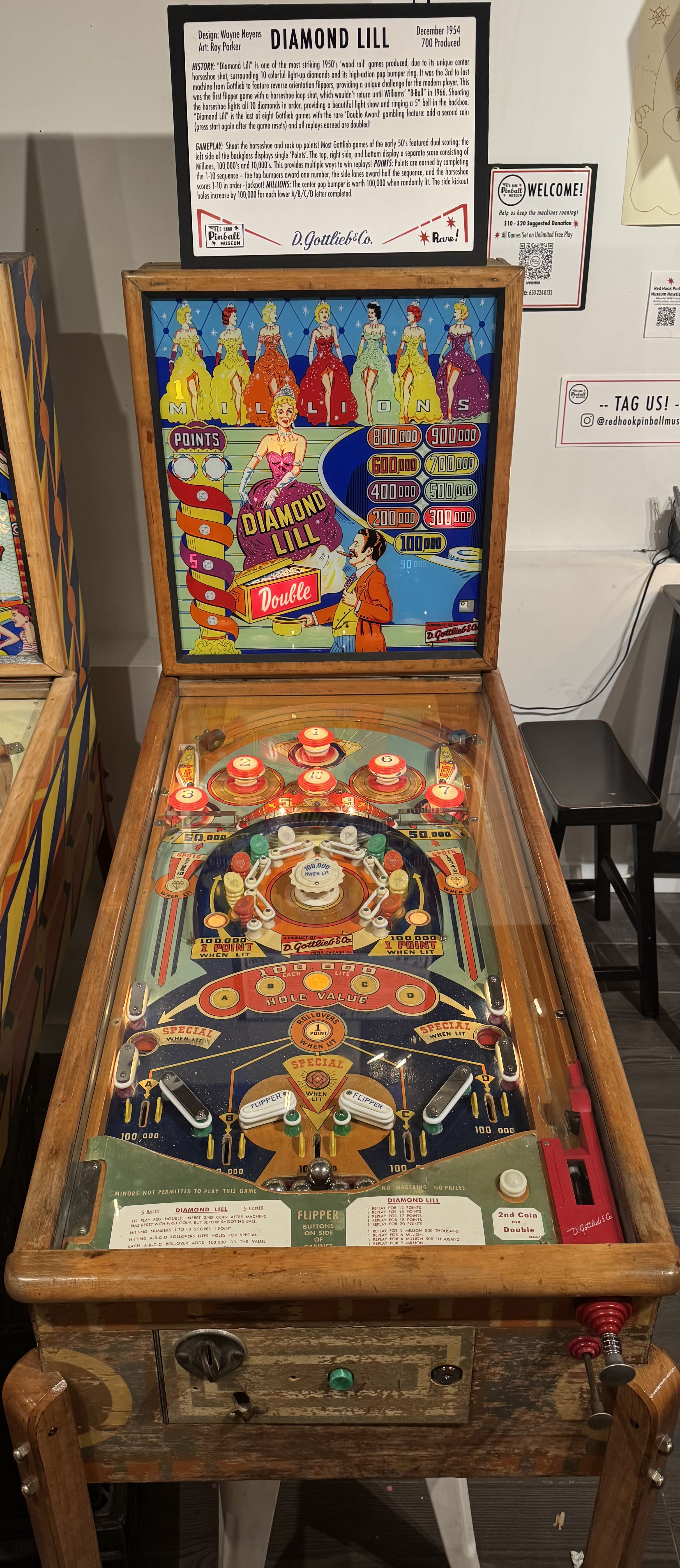
One of Roy Parker's finest art packages! Hit the spinning roto to dunk the clowns! Our copy at the museum is a very rare pre-production sample game!
1050 Produced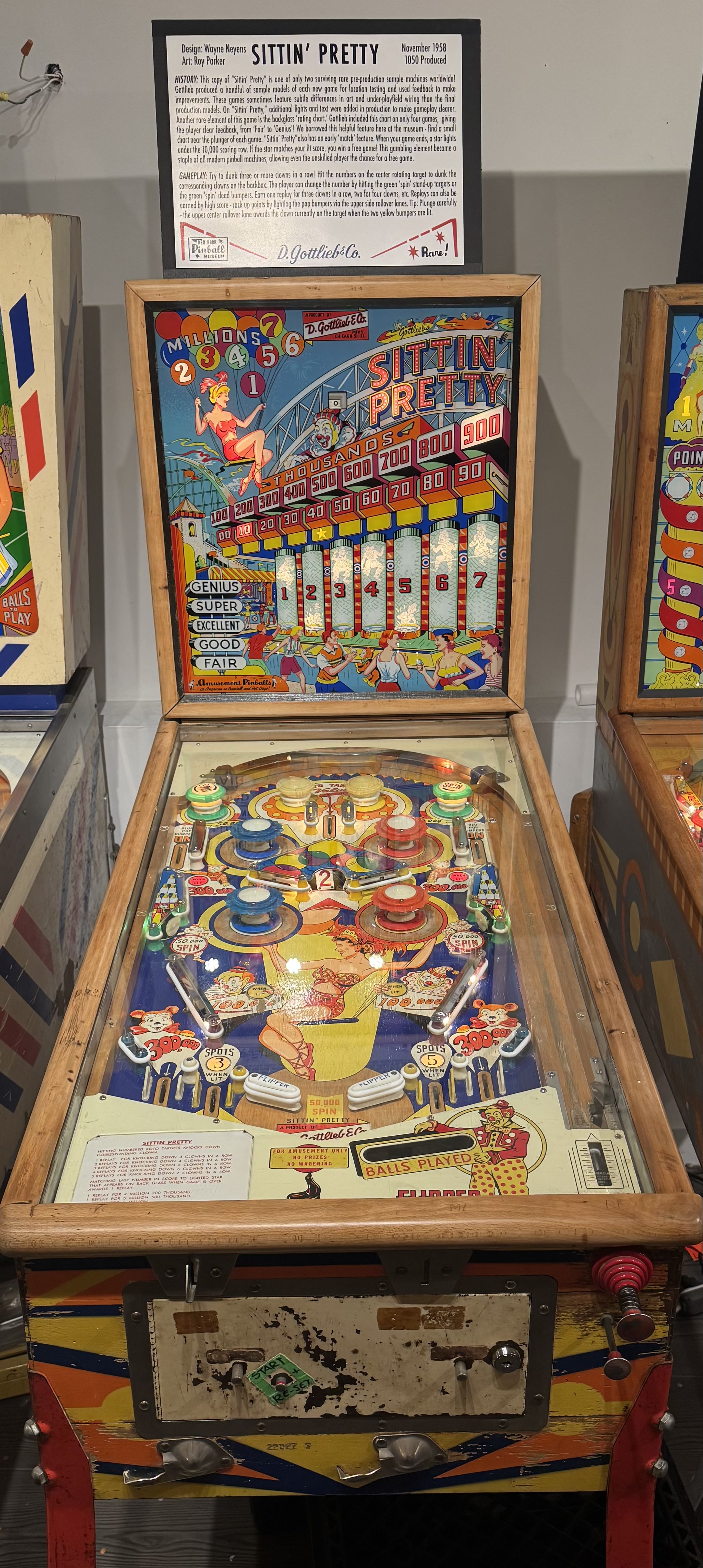
Majorettes is a classic Gottlieb design from Wayne Neyens and Roy Parker! Made solely as an Add-a-Ball model with no replay counterpart,
An interesting design feature is the lower kick-out hole, allowing for “Lazarus” type saves from below the flippers.
425 Produced
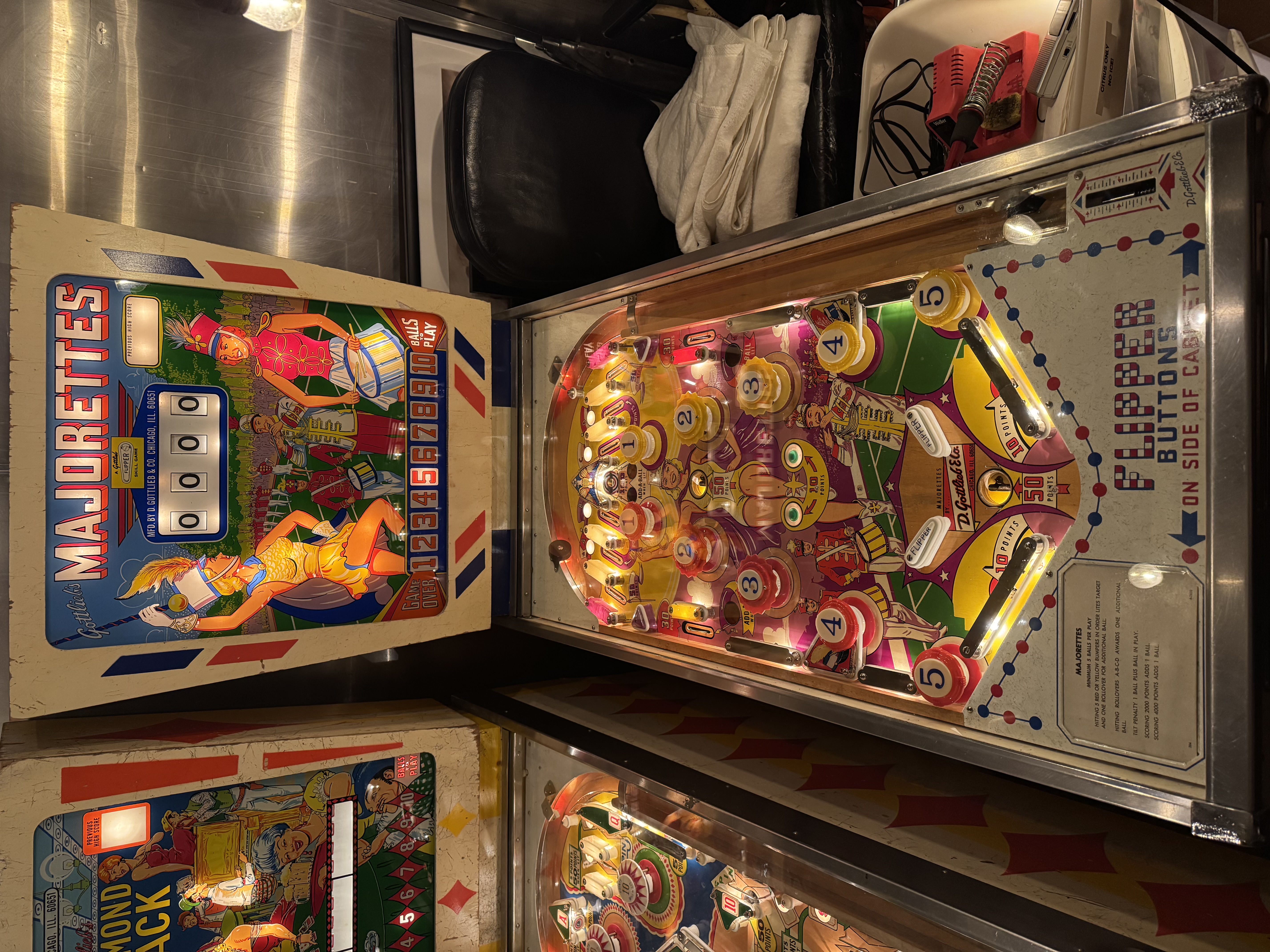
One of 2 games ever made to feature a carousel style “roto-target”, this game is considered one of the best card themed games ever produced by Gottlieb.
This game was also one of the first to feature an automatic ball lift, replacing the manual ball lift on older games such as “Majorettes”.
650 Produced
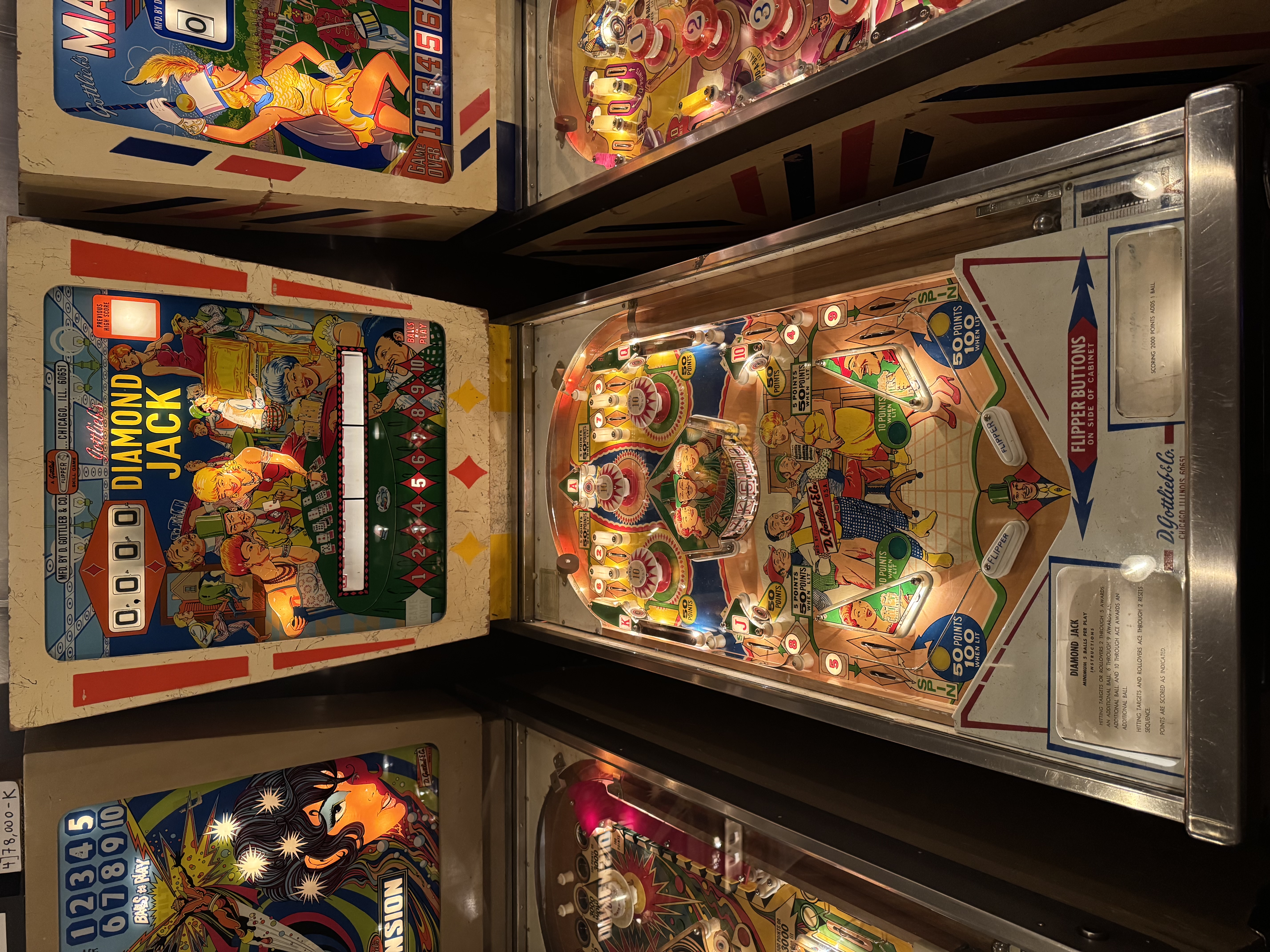
The rarest game to ever leave the Gottlieb production line! This Add-a-Ball model was designed specifically for New York pinball distributor, John Bilotta.
Also notable was that this was the first game to feature an end-of-ball bonus, now standard on all machines.
110 Produced
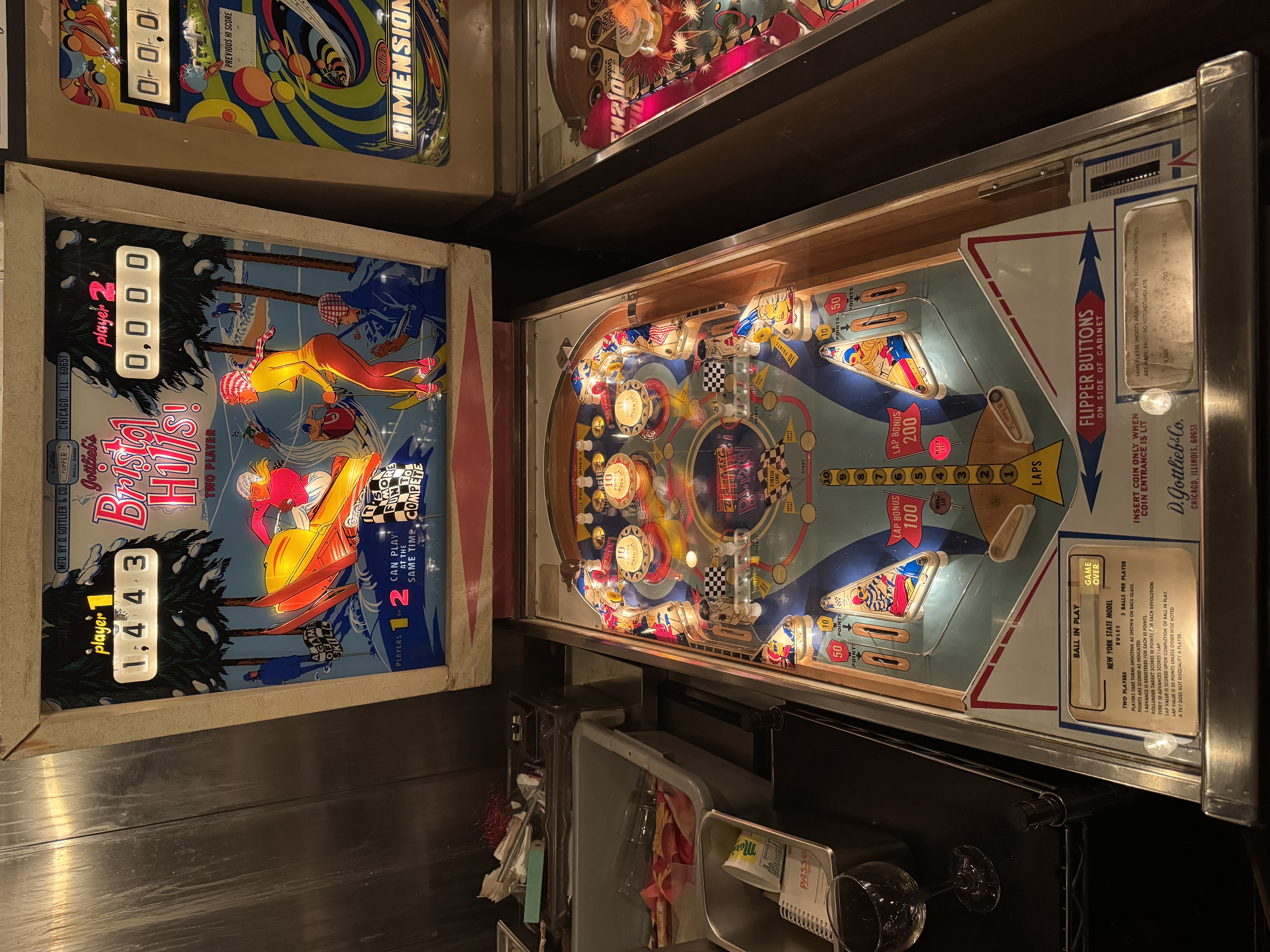
Drop targets galore! Two banks of 10 drop-down targets make Dimension's 20 drops the most of any pinball machine to-date! Complete a whole side for unlimited extra balls (until you drain D: )!
490 Produced
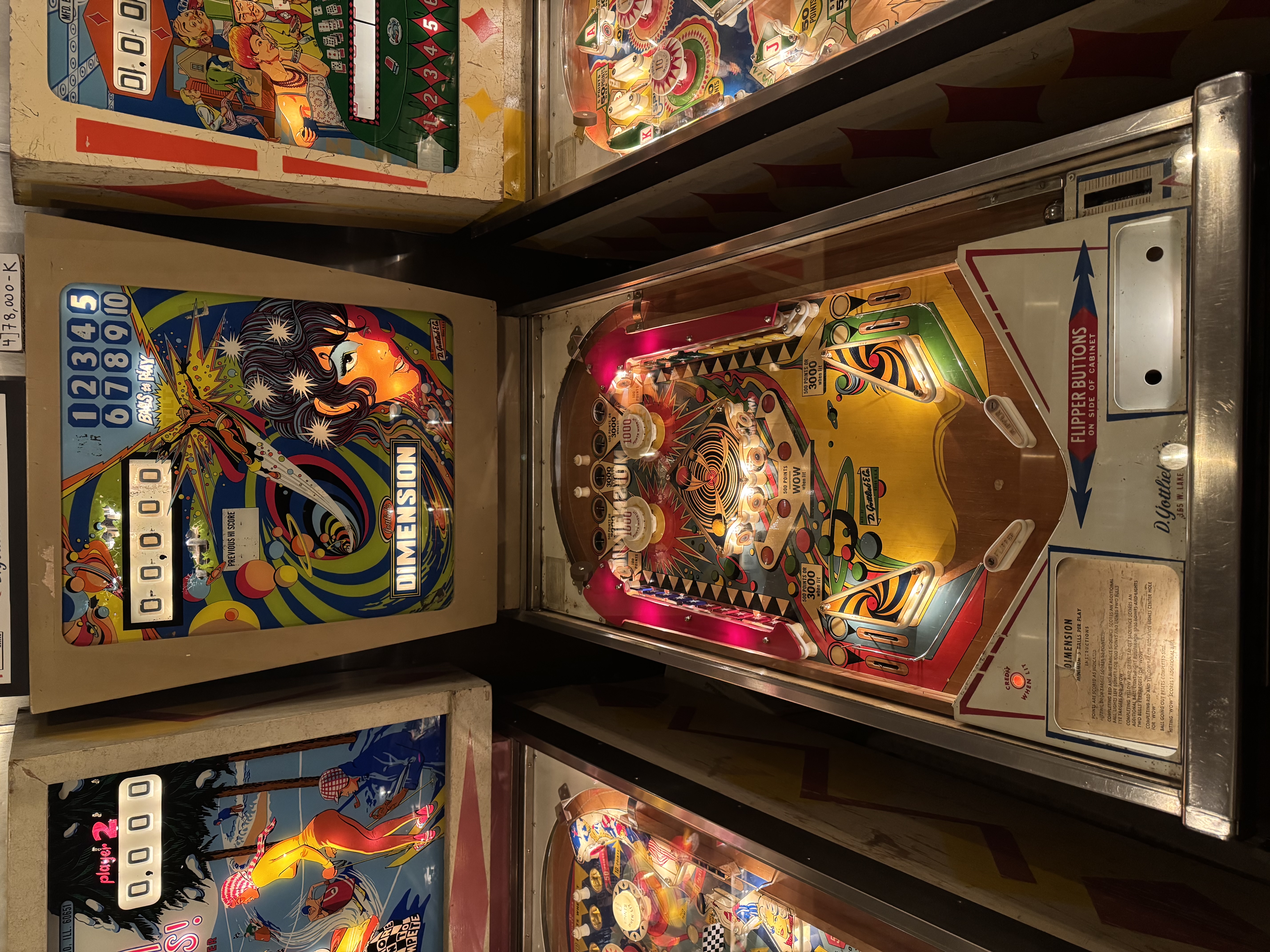
One of Gottlieb's many bowling themed games. This one features 2 sets of flippers for maximum flipping action! Bowl a strike!
4,350 Produced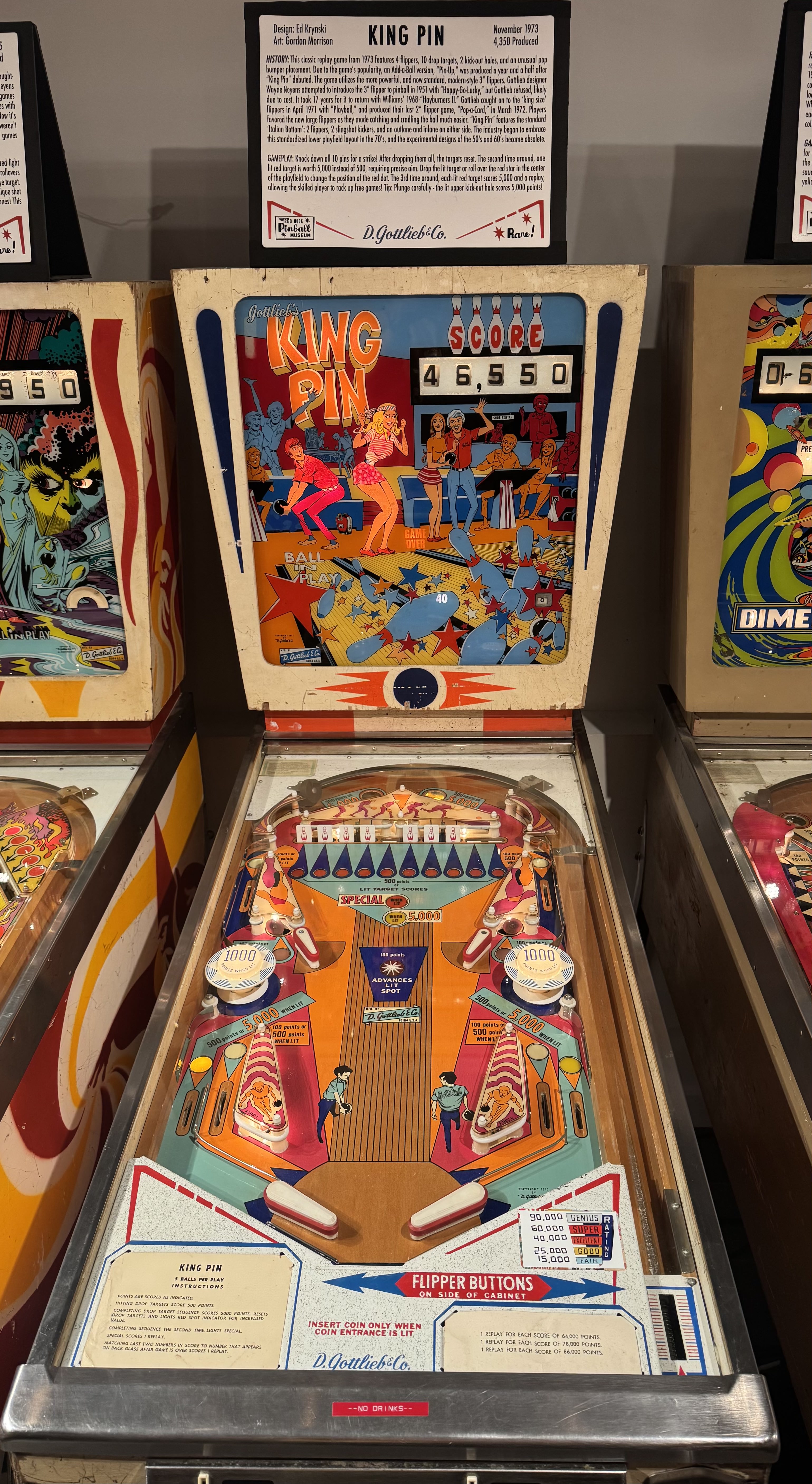
Rare copy of a William's game produced in Spain by Segasa. Features a different backglass and cabinet art from the more common Williams counterpart! Bumper between the flippers, look out!!!
1,034 Produced
One of the later EM's from Gottlieb featuring a much more complex ruleset with a building bonus! A tournament favorite!
2,937 Produced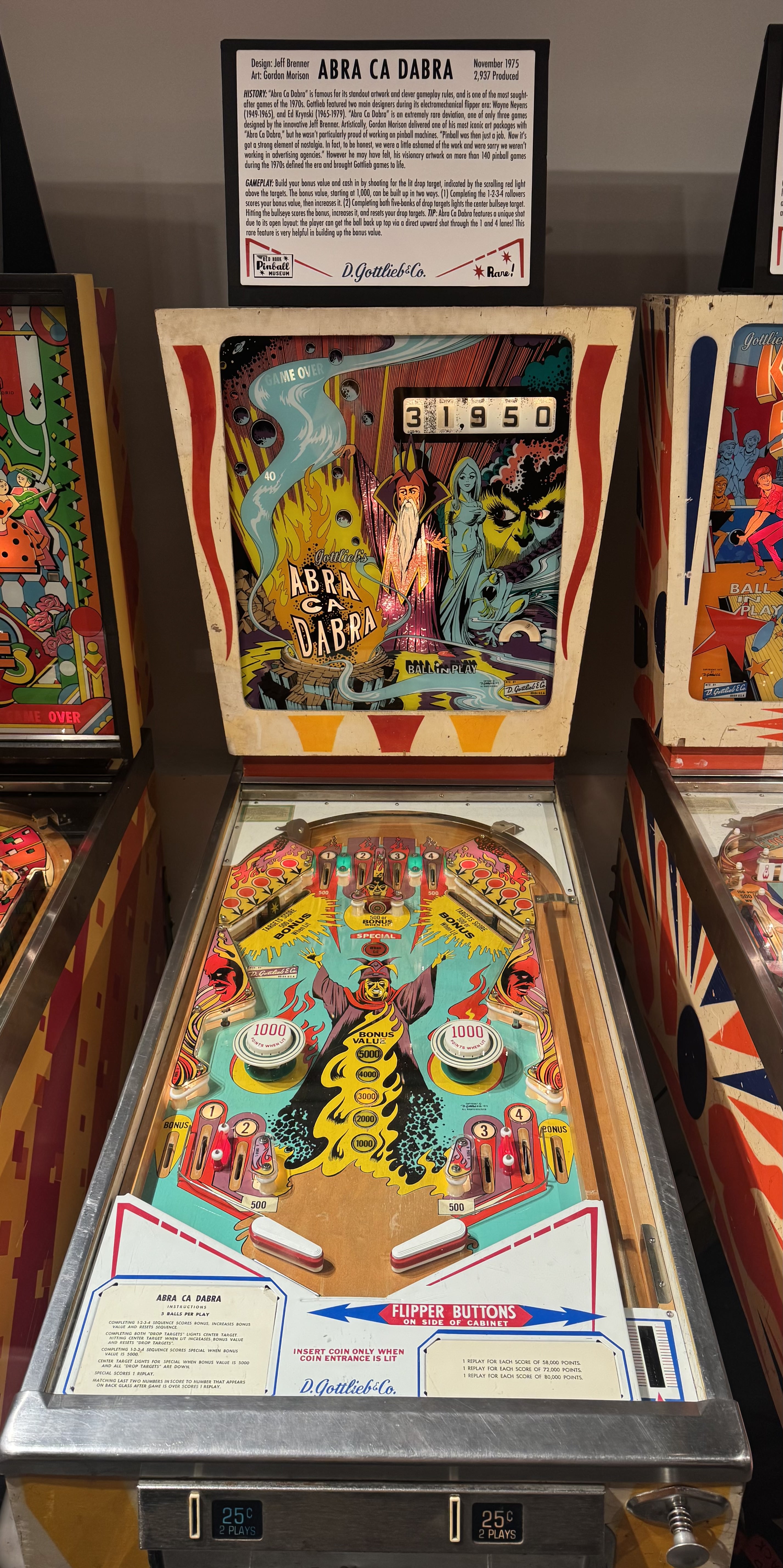
Imp ball gum vendor slot machine (1930s - Groetchen), 21 Black Jack Slot Machine(1940s - Daval),
ABT Target Skill Gun Game Model F with moving targets (1940s - ABT Manufacturing), Pike's Peak (1940s - Groetchen)
UNDER CONSTRUCTION (Coming soon!):Gottlieb 'Marble Queen' (1953), Gottlieb 'Green Pastures' (1954), Gottlieb 'Hit 'n' Run' (1952),
Bally 'Circus' (1957), Williams Hot Tip (EM - 1977), Williams 'Beat the Clock' (1963)
and Rock-Ola 'World's Fair Jigsaw' (1933)
Replay machines: award replays (free games)
Add-a-Ball machines: award extra balls
Since the introduction of coin-operated pinball in 1931 with Automatic Industries’ Whiffle, players were awarded cigars, cash, or replays (free games)
for completing certain objectives or reaching high scores. Replay credits could be cashed in with a bartender or clerk, which some considered a form of gambling.
As a result, New York City Mayor, Fiorello La Guardia, banned pinball in 1942 and many other cities followed suit. To evade this law, Alvin Gottlieb invented the Add-a-Ball
concept, first realized by expert Gottlieb designer Wayne Neyens in the 1960 game Flipper. Rather than free games, Add-a-Ball machines award the skilled player
extra balls for completing certain objectives or reaching score thresholds. This extends the gameplay and makes high scores, rather than free games, the main objective.
Gottlieb continued to produce Add-a-Ball games until the end of the electro-mechanical era in 1979. Many playfield designs have both a replay and an Add-a-Ball version,
the Add-a-Ball produced in lesser quantities for jurisdictions where winning replays was illegal. The rules vary between the models, with Add-a-Ball games often allowing
features to reset to earn additional balls: Dimension’s drop targets reset while in 2001, its replay cousin, they do not; Diamond Jack’s card sequence resets while King of Diamonds’
does not; etc. Art and theme also vary between the replay and Add-a-Ball models, making each unique. Add-a-Ball games tend to be more rare and collectable, and are a unique
intersection of New York and pinball history! [The pinball ban wasn’t overturned until the famous 1976 Manhattan City Council hearing, during which Roger Sharpe demonstrated
that pinball is a game of skill, not chance, and should not be subject to legal prohibitions on gambling. Following Sharpe’s demonstration the council voted unanimously to lift the
existing ban on pinball.]
Tip: Add-a-Ball machines are identifiable by their backglasses, which show numbers 1-10 labelled “Balls to Play”. The machines count down from ball 5, with the ability to add
extra balls, up to 10 at any given time. In contrast, replay machines display the “Ball in Play” counting up from 1 to 5, with earned replays shown on a separate reel.
Foreign Facts: Gottlieb produced special export models of many Add-a-Ball machines for the lucrative Italian market. Italian gambling prohibitions of the era were even more strict
than New York’s, and earning 5 or more extra balls was considered the same as winning a replay. Gottlieb found a surreptitious way to sneak the Add-a-Ball feature under the radar.
Take a look at the Dimension backglass: on the Italian export model, Galaxie, there are no “Balls to Play” lights. Instead, one of the five stars above the woman’s face lights for each extra
ball, up to five at any time. This clever concealment of the Add-a-Ball feature was enough to evade legal suspicion while still rewarding the skilled player.

/\
/ \
|\ \
| \ \
| .\ \
| .\/|
| .||
| ||
/ \ ||
/,-.\: ||
/,, `\ ||
/, ', `\||
/, * ''/ |
/, *,'/ |
/, , / |
/ : , / .|
/\ : , / /||
|\ \ .., / / ||
|.\ \ . / / ||
| \ \ / / ||
| \ / / |'
|\o '|o /
||\o | /
|| \ | /
|| \|/
|' ||
||
||
|'

Website made by THE JESTER